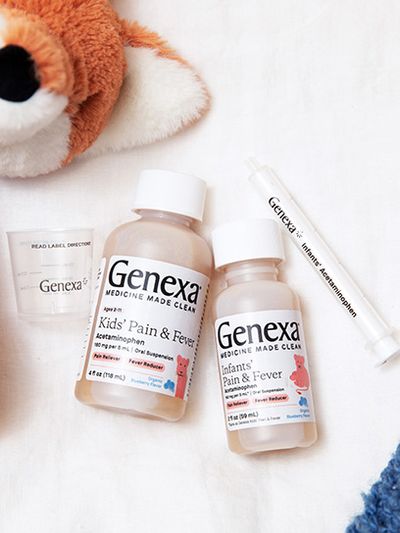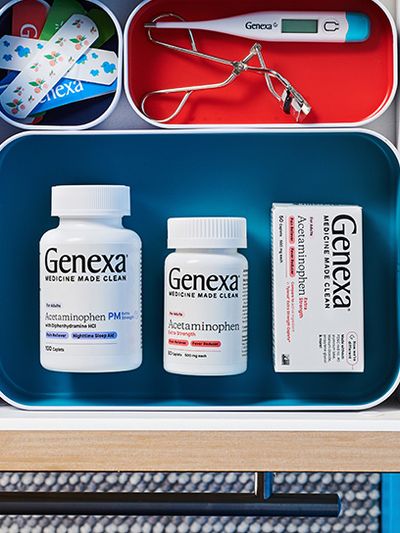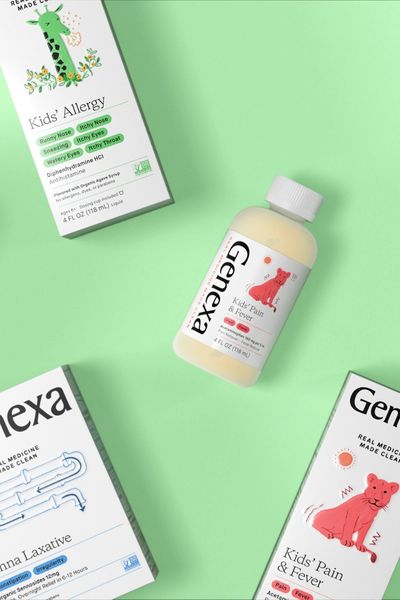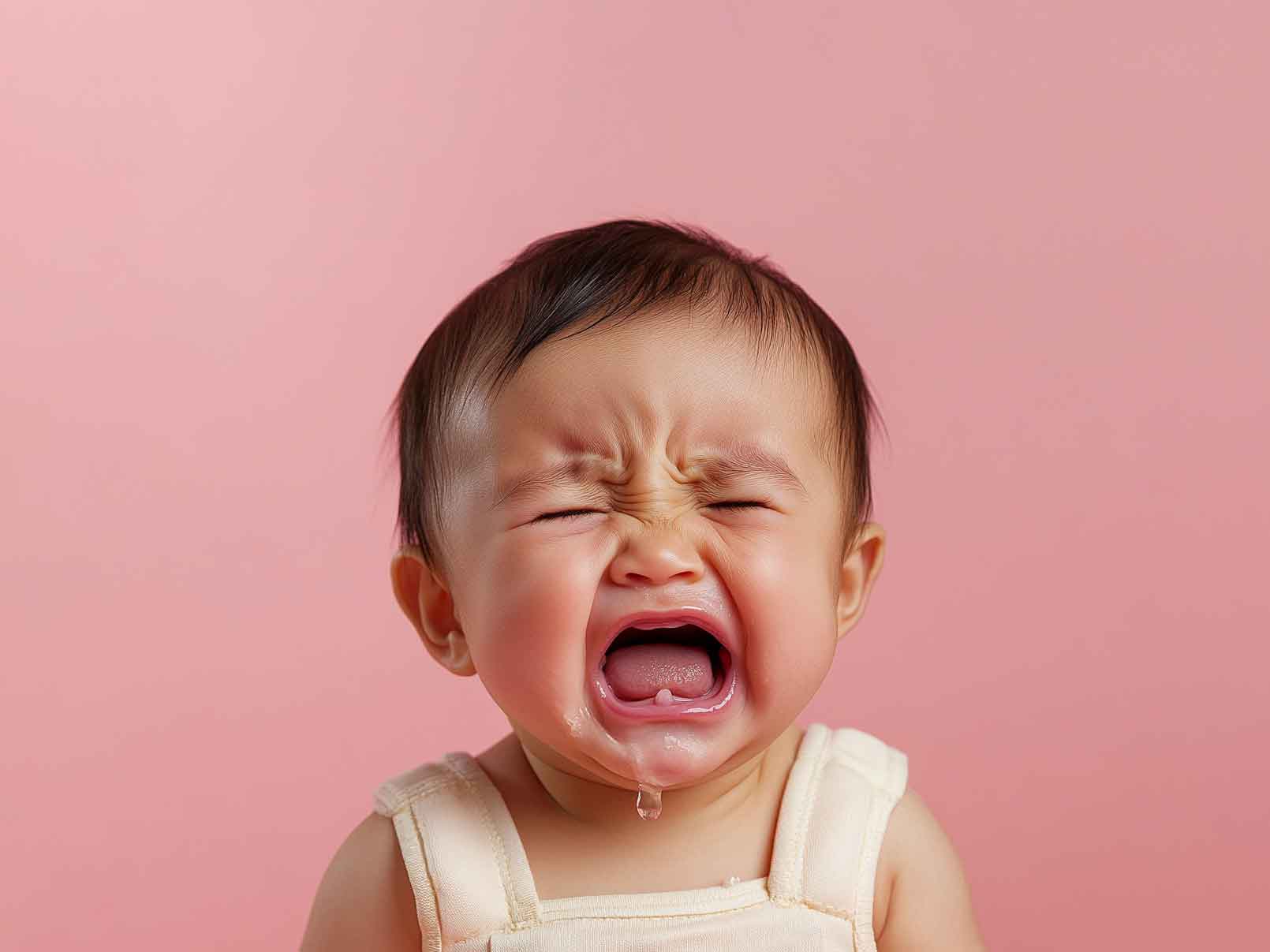Teething Signs and Symptoms
The teething process can cause some discomfort for your baby, but it may not cause any at all. Teething can come along with a variety of symptoms mostly stemming from sore gums as new teeth erupt, but there are also plenty of misconceptions when it comes to exactly which symptoms are caused by teething.
Building a better understanding of the teething signs and what to expect during it can help you recognize when your baby is simply dealing with new teeth or when something else is wrong.
Teething does not cause a fever, vomiting, or diarrhea, even though these symptoms have often been associated with teething. Let’s examine the most common symptoms of teething and when you should call your pediatrician.
Ready for fast relief for your baby’s minor aches and pains? Shop Genexa’s Infants’ Pain and Fever to get ahead of teething and its symptoms now!
Teething Signs and Process
Your baby’s teeth start forming in the womb but don’t break through the gums until later. Most babies begin teething between 5 and 7 months, though some may start earlier or later—every baby is unique.
Typically, the bottom middle teeth appear first, followed by the top middle teeth. By around 2½ years of age, most children will have their full set of 20 baby teeth.
Common teething signs include increased drooling, swollen gums, fussiness, and frequent chewing on fingers or fists as they try to ease discomfort.
How to Ease Teething Symptoms
Teething can be tough, but there are simple ways to soothe your baby’s sore gums:
- Massage their gums: Use a clean finger or damp gauze to gently rub their gums. The pressure can help ease discomfort.
- Try a frozen washcloth: Twist a damp washcloth and freeze it. Let your baby gnaw on it or use it to massage their gums. Chilled spoons or cold (not frozen) teething rings work well too.
- Offer frozen fruit: If your baby is eating solids, frozen bananas or berries can provide relief while doubling as a tasty treat.
If these remedies aren’t enough and your baby is still uncomfortable, a dose of acetaminophen can help. Always consult your doctor before giving medicine to children under 3 years old.
Genexa’s Infants’ Pain and Fever offers relief for minor aches and pains, made with the same active ingredient as Children’s Tylenol®. Genexa is the first clean medicine brand, committed to providing effective medicine without artificial fillers.
Founded by two dads who wanted better options for their families, Genexa creates clean, reliable medicines with the same effective active ingredients as leading brands but without artificial additives. Because every parent wants the best for their kids.
Other Side Effects of Teething
Other symptoms that teething may come along with include:
- Irritability: This is caused by the sheer discomfort of their teeth erupting, and the first teeth or molars are usually the most uncomfortable.
- Skin rashes: The teething process can stimulate increased drooling, and this drooling may lead to skin rashes.
- Coughing: All that extra saliva produced during teething can cause your baby to cough or gag occasionally.
- Low-grade fever: A low-grade fever is one ranging from 98 to 100 degrees Fahrenheit. It is typically caused by your little one putting unclean hands in their mouth… which tends to happen often while babies are teething.
- Cheek rubbing and ear pulling: The pain in your baby’s gums can actually travel and radiate to their cheeks and ears, especially if their molars are coming in. As a result, your baby will start rubbing or pulling at those areas.
- Diarrhea: It is possible that the increased saliva production can cause your baby’s stool to become loose, but more research is needed to determine this. Moreso, it is largely recommended that if you notice this, you should consult your pediatrician to make sure nothing more serious is going on.
Does Teething Cause Diaper Rash?
Although teething is often cited as the reason for diaper rash in babies, there is no correlation between the two. One instance in which teeth can indirectly cause diaper rash is if the excessive saliva created during teething upsets a baby's stomach and causes diarrhea which can lead to diaper rash. However, even in this instance, there’s no direct correlation between the two.
Another indirect way teething can “cause” diaper rash is if your baby chews on toys that have bacteria on them. This can upset their digestive system and cause diarrhea. Luckily, this is easy to avoid by regularly cleaning and sanitizing your baby’s toys.
Does Teething Cause Vomiting?
Vomiting is not directly caused by teething, and if your child begins to vomit while they are going through the teething process, you should never assume that the two things are related. That said, if your baby struggles with reflux issues, there may be a link here. It is possible that the teething process may make reflux worse because of the potential for excess saliva to upset your child’s tummy. When a new tooth is growing, your baby may experience worsened symptoms of reflux. This worsening of reflux symptoms may also be caused by the simple fact that teething disrupts your baby’s normal routine, throwing off their tiny body a little bit.
If you are unsure if your baby has acid reflux, you should contact your pediatrician. Your doctor will be able to answer any questions or concerns you may have, and when it comes to your baby’s health, it is always best to play it safe.
Can Teething Cause Fevers?
A common misconception about teething is that it can cause a fever. While teething may slightly raise your baby’s temperature, it won’t exceed a low-grade level. Anything over 100°F should not be attributed to teething.
A study of over 3,500 children under age 3 found only occasional links between teething and mild temperature increases. This slight rise—often mistaken for a fever—can worry parents, but it’s typically harmless.
If you have any doubts or concerns, it’s always best to consult your pediatrician.
What Are Not Symptoms of Teething and Should Be Discussed with a Doctor?
Teething is often blamed for symptoms it doesn’t cause. Signs that are not related to teething and should be discussed with a doctor include:
- Congestion or persistent coughing
- Sleep disturbances
- Diarrhea
- Rashes (other than facial rashes)
- Fever over 100°F
- Vomiting
Diarrhea, for example, is sometimes associated with teething due to increased saliva, but there’s no medical proof linking the two. Similarly, persistent coughing may stem from a cold or other illness, not teething.
During teething, babies often put their hands in their mouths, introducing germs that can lead to illness. This might explain why teething is mistakenly connected to symptoms like diarrhea or fever.
When in doubt, consult your pediatrician. Symptoms like these should not be assumed to be caused by teething.
Is My Baby Teething or Actually Sick? Knowing the Difference
Distinguishing between teething symptoms and illness is an important part of caring for your baby. Keep in mind that teething typically doesn’t cause diarrhea, fever, or colds.
Teething may make your baby feel warmer, but a fever of 100.4°F or higher is more likely due to illness. Fevers caused by illness are often accompanied by other signs such as a runny nose, cough, poor feeding, or vomiting. Occasional coughing or gagging from teething is normal, but persistent coughing may indicate a cold or other illness.
If you are unsure about your baby’s symptoms, always consult your pediatrician. It’s better to play it safe.
When to Call Your Pediatrician
If your child is vomiting, especially alongside a fever or diarrhea, it’s important to contact your doctor. Signs that require immediate attention include:
- Vomiting everything they consume
- Acting or looking very ill
- Known immune system issues
Babies in daycare or group settings may catch illnesses like the stomach bug, particularly if they put germy hands in their mouths while teething. Regardless of the cause, if you’re concerned about your child’s symptoms, get in touch with your pediatrician.
When Teething Becomes More Manageable
Teething can be a challenging time for both you and your baby, but understanding the process and recognizing common symptoms can help make it easier to navigate. From knowing the typical signs of teething to identifying when something may be more serious, staying informed ensures your little one gets the care they need.
While teething may cause some discomfort, remedies like gum massages, frozen washcloths, and clean medicine options can provide relief. Always keep in mind that symptoms like diarrhea, high fevers, or persistent vomiting are not caused by teething and should be discussed with your pediatrician. When in doubt, it’s best to play it safe and seek professional advice.
Every baby is unique, and as a parent, you know your child best. By staying attentive to their symptoms and offering comfort where you can, you’ll help them through this important developmental milestone with confidence and care.
Disclaimer: The information on our site is NOT medical advice for any specific person or condition. It is only meant as general information. If you have any medical questions and concerns about your child or yourself, please contact your health provider.






